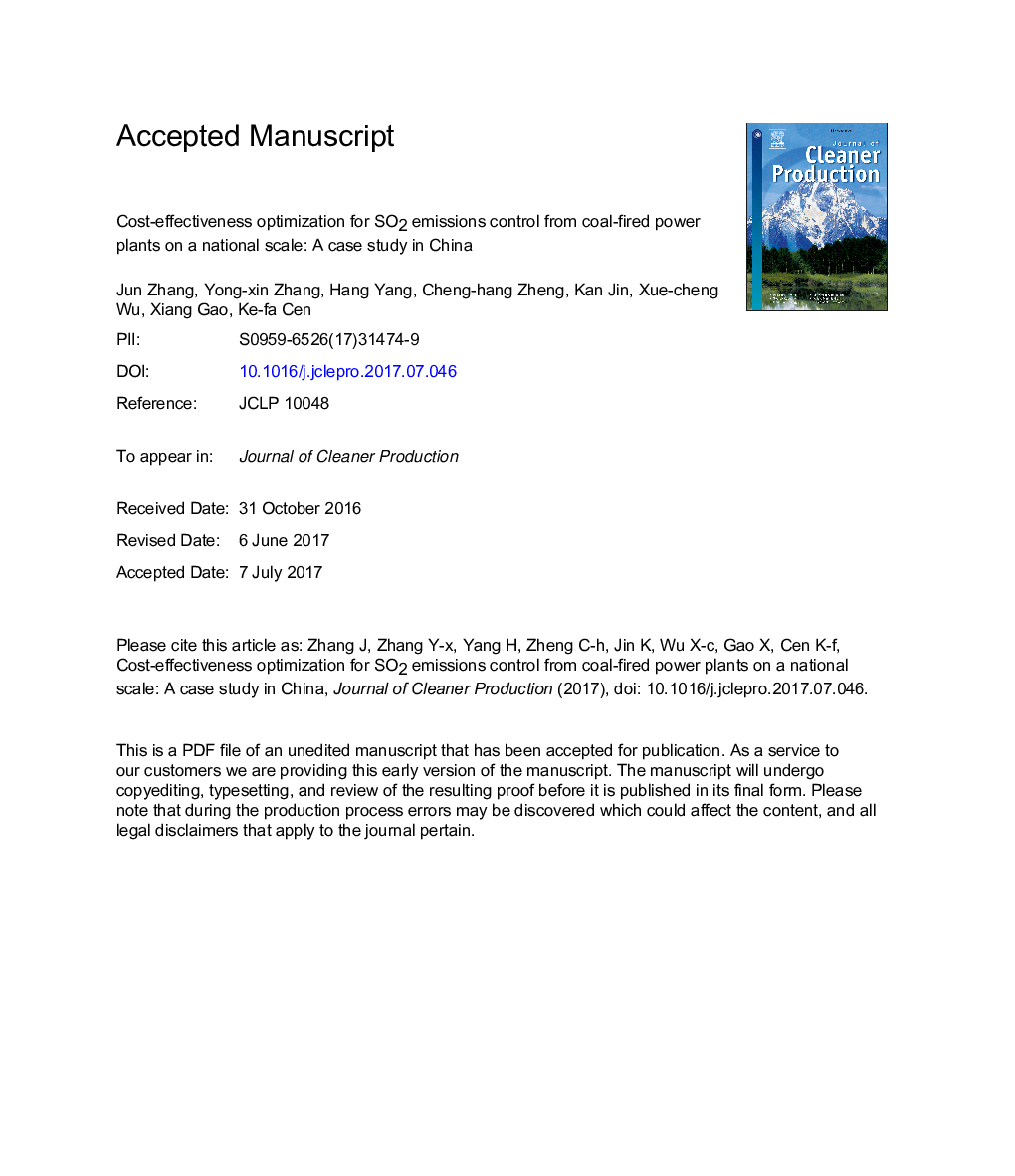| Article ID | Journal | Published Year | Pages | File Type |
|---|---|---|---|---|
| 5480063 | Journal of Cleaner Production | 2017 | 29 Pages |
Abstract
In China, industry is responsible for 88.15% of the sulfur dioxide emissions, of which coal-fired power plants account for around 35.62%. Moreover, over 90% of power plant had installed FGD implementers. On the road to an optimal economic emission control, this article develops an ILP algorithm to optimize the sorting SO2 emission control technology costs, based on a detailed database that contains large amounts of information for 1,966 thermal power plants, such as unit installed capacity and annual generating capacity, coal consumption, sulfur content, emission control technologies, operation duration and geographical location. The results demonstrate that the total operating costs will increase along with emission abatement. When the average desulfurization efficiency reaches 95%, 98% and 99%, the total operating cost in China is 54.4 billion CNY, 64.8 billion CNY and 78.6 billion CNY, respectively. Under the scenario that every power plant reaches the SO2 emission limitation, the total operating cost of following the least-cost retrofitting laws could reduce by 5.05% to 15.31% nationwide. Finally, the study suggests that desulfurization equipment with high removal efficiency should be installed primarily in larger units, and policymakers could develop cost-effectiveness control strategies for coal-fired power plants using the results of this paper.
Related Topics
Physical Sciences and Engineering
Energy
Renewable Energy, Sustainability and the Environment
Authors
Jun Zhang, Yong-xin Zhang, Hang Yang, Cheng-hang Zheng, Kan Jin, Xue-cheng Wu, Xiang Gao, Ke-fa Cen,
